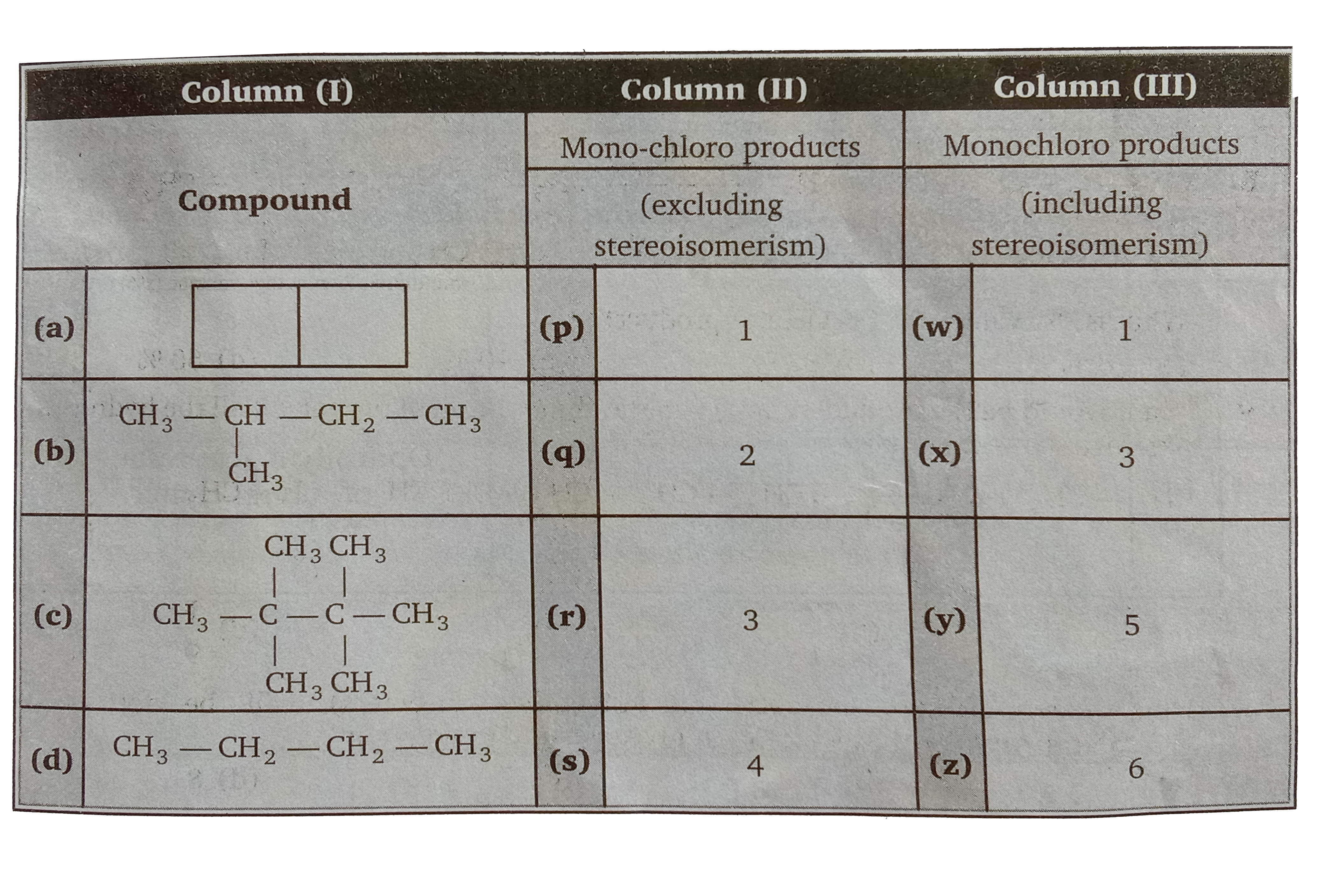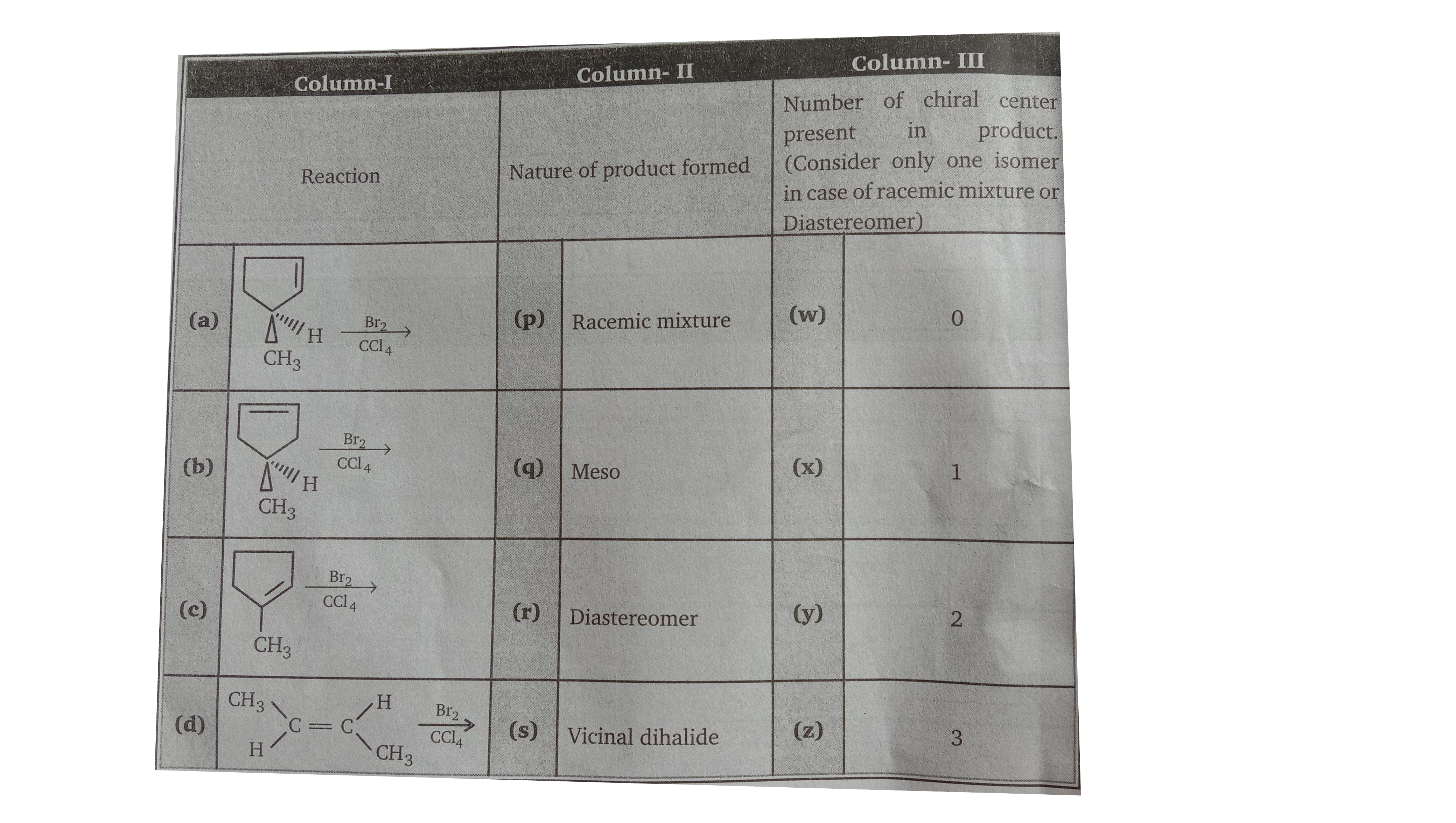Column I represent the size of the soli particles and column II represents type of soli components. Which of the following is correct match for the column I and column II.
Column I Column II
A. 0.2 to 2.00mm-(i) Slit
B. Less than 0.002 mm-(ii) Clay
C. 0.02 to 0.2 mm-(iii) Coarse and particle
D. 0.002 to 0.02 mm-(iv) Fine sand particleSolution in Tamil
ii iii iv i
iv i iii ii
iii ii iv i
none of the above
The correct Answer is:C
I-iii, II-ii, III-iv, IV-i
Topper's Solved these Questions
- BOOK - SURA PUBLICATIONCHAPTER - MODEL QUESTION PAPER 04EXERCISE - MCQ PART-81videos
MODEL QUESTION PAPER 04
- BOOK - SURA PUBLICATIONCHAPTER - MODEL QUESTION PAPER 04EXERCISE - MCQ PART-91videos
MODEL QUESTION PAPER 04
- BOOK - SURA PUBLICATIONCHAPTER - MODEL QUESTION PAPER 04EXERCISE - MCQ PART-61videos
MODEL QUESTION PAPER 04
- BOOK - SURA PUBLICATIONCHAPTER - MODEL QUESTION PAPER 03EXERCISE - LONG ANSWER TYPE QUESTIONS4videos
MODEL QUESTION PAPER 03
- BOOK - SURA PUBLICATIONCHAPTER - NEET BASED QUESTIONSEXERCISE - MULTIPLE CHOICE QUESTIONS80videos
NEET BASED QUESTIONS
Similar Questions
Which of the following is / are not the mechanism of decomposition?
04:15View SolutionWhich of the following is not a abiotic component of the ecosystem?
04:57View SolutionA free living nitrogen fixing cyanobacterium which can also form symbiotic association with the water fern Azolla ………….. .
05:21View SolutionIs their any possibilities to tranfer a suitable desirable gene to host plant without vector? Justify you answer.
View SolutionThe plant of Cycas, which belongs to sporophytic generation, is differentiated into :
03:14View SolutionMatch the following column I with column II and choose the correct combination.
ColumnIColumnII(a)Earthworm(i)Gizzard(b)Cockroach(ii)Caecum(c)Frog(iii)Clitellum(d)Rat(iv)Cloaca04:02View SolutionMatch the column I with column II and with column III.
 View Solution
View SolutionMatch the column I with column II and with column III.
 03:12View Solution
03:12View SolutionMatch the column-
Column IColumn IIA Toxinsi. MorphineB Alkaloidsii. AbrinC Lectinsiii. VinblastinD. Drugsiv. Concanavalin A
ABCDiiiiiiiviiiiiiiviiiiviiiviiiiii02:21View SolutionMatch the statements (a, b, c, d) in column I with the statements (I, ii, iii, iv) in column II.
 01:37View Solution
01:37View SolutionMatch of following columns {:("","Column-I","",Column-II),(A,"0.2-2.00mm",1,"silt"),(B,"less than 0.002 mm",2,"clay"),(C,"0.02-2 mm",3,"coarse sand particle"),(D,"0.002-0.02 mm",4,"fine sand particle"):}
06:57View SolutionColumn I represent the size of the soil particles and Column II represents type of soil components. Which of the following is correct match for the Column I and Column II.
03:02View SolutionMatch Column-I with Column-II :
Column-IColumn-II(1) Positive acceleration(a) Speed of particle decreases(2) Negative acceleration(b) Speed of particle increases(c) Speed of particle keep on changing01:27View SolutionMatch Column I with Column II. (a) Physalia (Column I),(i) Devil fish (Column II),(b) Ascaris (Column I),(ii) King crab (Column II),(c) Limulus (Column I),(iii) Roundworm (Column II),(d) Octopus (Column I),(iv) Portuguese man of war (Column II)
03:18View Solutionmatch the following: a. ICNB (column I) and (i) bacteriophage (column II). (b) ICNCP(column I) and (ii) animals(column II). (c)ICVCN( column I) and (iii) Vibrio cholerae (column II). (d)ICZN(column I) and (iv) cultivated plants (column II)
01:28View Solution

